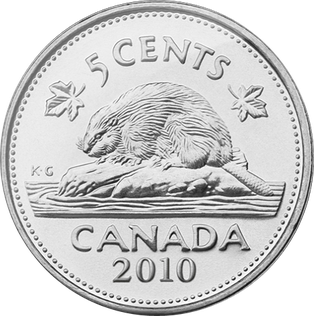CN Rail, are they still required to send scooters out to check the rails before a passenger or freight trains roaring down the track. Plaster Creek report
 |
| And More NOT Burnaby 2014 |
Has CN Rail already cut that scooter operators out of the mix, like their suggestion, their Threat, of removing operators from the lift spans in Burrard Inlet, even though Kinder Morgan is going to be quadrupling the amount of Crude Oil leaving from the east side of the Second Narrows Bridge, and coincidentally the same number of vessels, empty, coming in to Burrard Inlet.
CPR
A beaver was chosen as the railway's logo because it is one of the national symbols of Canada AND represents the hardworking character of the company.
 |
| CPR |
The hard working nickel of Canada:
 |
| Nickel |
 |
| de Havilland DHC - 2 Beaver |
 |
| Five cent Canada Postage Stamp |
 |
| Three cent Canada Postage Stamp |
 |
| The original 'Canada Dry' logo Suggestion From Anon 9:27am |
CNRail???? they're the guys who stole our BC Railway for 990 years for a pittance of $990,000,000!!! Their Symbol: A Maple Leaf
Canadian National Railway or CN Rail has not been keeping up with the times where they continue to expand into the realm of double tracking, but not going the extra mile and "protect" the weight traveling atop the rail bed from pushing down and out < --------- >
Protesters now have a new weapon in the transport of Crude oil, Dilbits, LNG... Beavers!!! All they need, is TWO Beavers M/F, a wet area, plenty of nearby greenery and a railway forming one side of a dam.... helps. Current protest is happening near Government and Caribou, Burnaby
CHECK IT OUT
and
Stanley Park's Beaver population working harder than clean-up crews
In the case of beaver "infested areas", rail companies now knowing that even one of the smallest creatures on Earth can bring down their mighty steel machines, should be required to build concrete retaining walls to hold their rails in place, down, sideways, ......a Capital U channel. Those construction activities would probably do more to harm the beaver and other wildlife in the wet areas, but they, the beavers, could be trapped, not for their pelts or their lives, but to be cared for .... like Hope for WildLife Society, and then returned to their natural habitat once the construction is completed.
 |
| Metro Vancouver |

5 comments:
The original 'Canada Dry' logo included a beaver too.
http://www.digitaldeliftp.com/Images/pings/ccdd121.png
Love your blog...
Not sure if anyone remembers but when CN. took over BC Rail it was a derailment a week in the north
This from the Vancouver sun
Accident rate on BC Rail line jumps
December 6, 2005
The frequency of derailments along the former BC Rail line is significantly higher since CN took over the former provincial railway
Did we really get a billion dollars for our much loved RailRoad.
Good thing we got rid of it just in time for Enbridge.. funny how that worked out
Anon - Thank you for the link, I've updated it
Elizabeth - I do remember the derailment, but only after you jogged my memory Accident rate on BC Rail line jumps
If you want to search further back in time, there's always the digital "Canadian Newstand" Abstracts along with full stories, at your local Online public Library.
perhaps the railways could try rail and rail bed inspections on a regular basis. They may want to save money by not hiring crews to do the work but lawsuits maybe more expensive, or perhaps they aren't and they will continue to do nothing, until more people are killed.
Rail safety is becoming a major issue in North America. it may be a federal responsibility in Canada but those trains are traveling through provincial and municipal territory.
Shipping by rail can be safe. However, the companies and federal government need to be committed to safety. At this point in time I've concluded they would rather make more money than ensure the humans in the area are safe and stay alive.
After BCR got swiped, CN immediately increased the number of cars per engine; more profit but at a cost.
It is axiomatic that the rail hazard factor increases with longer trains, more toxic freight, more frequent runs, less oversight, fewer operators and less track and car maintenance. Have rail companies stepped up to this increase of responsibility?
Post a Comment